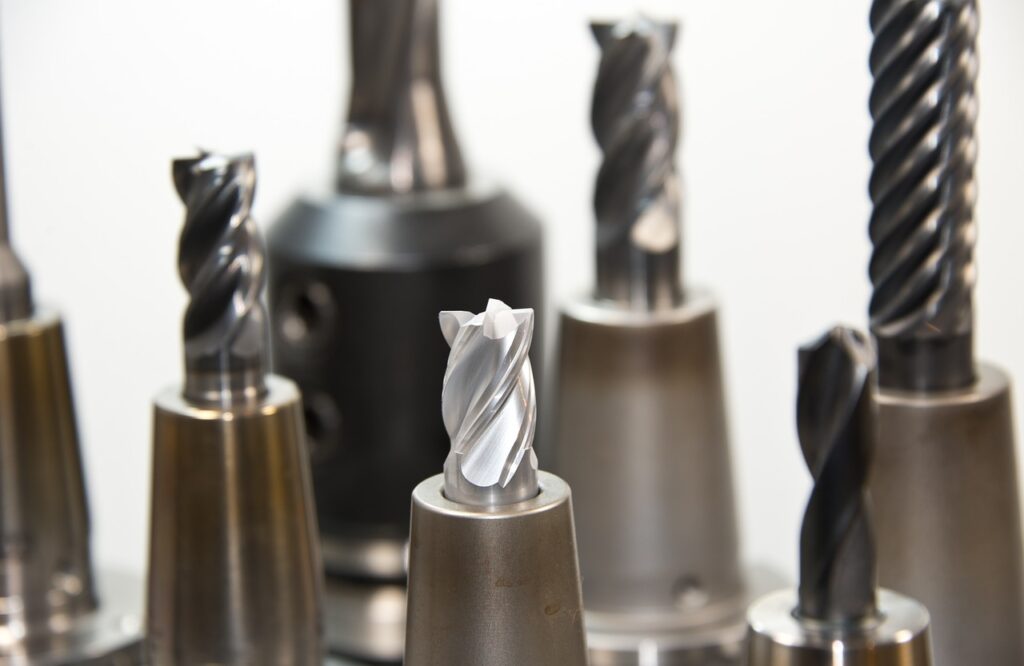
Carbide scrap metal isn’t exactly available everywhere. It’s not something that a scrapper will just happen upon. Carbide, and particularly tungsten carbide, is a high value, high rarity material that metal recovery experts go in search of. It’s only found in a handful of applications, but they are extremely important applications that several industries rely upon. This makes recycling carbide a worthy goal, and one that typically has to be done with the help of an experienced metal recovery expert.
Carbide Chemistry
Carbide generally refers to tungsten carbide, which is one of the hardest materials that people can manufacture. It is produced by bonding equal numbers of carbon and tungsten atoms together, and the resulting material is extremely dense and hard. On the Mohs scale, it grades out between eight and nine, and there are only a couple naturally occurring materials, such as diamond, that rate higher. In fact, when carbide edges have to be sharpened following wear, it often has to be done with a diamond-edged tool.
Carbide is prized for this incredible hardness because it imparts unmatched abrasive resistance, along with excellent thermal resistance as well. These properties lend it to several critical applications, including:
1. Machining – The number one use of carbide is in a variety of metalworking tools. These including saw blades, routers, lathes, drills and many other shaping tools. Carbide is so useful in this setting because it can withstand much more wear before it needs to be replaced. Compared to steel tools, they last about 20 times longer. And because carbide can withstand higher temperatures, it can machine at much faster rates. In general, carbide is needed for extended production runs, or for runs of high quality components that need precision machining.
But even the toughest tools will wear down eventually, past the point of being rescued by sharpening, and when carbide tools are ready to be retired, they should be handed to a metal recovery expert.
2. Mining – Similar to machining applications, carbide is relied on to provide the point of contact for cutting and grinding tools. These tools include drills, reamers, hammers, chisels and shearers. Mining involves punishing environments, and carbide is normally the material that comes into contact with the aggregate. Carbide is normally formed into teeth or tips that are anchored onto a steel matrix, reducing the overwhelming cost that would result if the entire tool was made from carbide. That hints at the material’s impressive value, even when it is only available in small amounts.
3. Oil and gas – Unsurprisingly, carbide also finds frequent use in the oil and gas industry, where its ability to hold up in low lubrication applications makes it particularly valuable. There are lot of such applications at places like gas compression and crude refining facilities. Carbide is typically formed into small components for these applications and may serve as rings, seals, bearings, bushings and many other parts.
4. Medical facilities – Carbide is also found in high performance surgical tools, where it is prized for its ability to make precise cuts. Carbide tools are much more expensive than stainless steel tools, but they are often a necessity for surgeons that perform complex procedures. The difference can mean much improved patient outcomes.
5. Jewelry – Carbide is an interesting, and increasingly popular option for producing decorative worn rings. It is about 10 times harder than 18K gold, so it will not scratch, which is a common problem with gold jewelry. Carbide also produces an attractive luster, which drives its value up further. Interestingly enough, though, is that special tools may be needed to remove carbide jewelry if it has to be remove right away, such as when fingers or a hand swell up.
No matter where a metal recovery expert sources their carbide from, there is usually significant processing involved in separating the material from other metals. It may need to be extricated from larger components or from spent machining stock. In short, it takes real expertise to identify and remove it from aggregate materials. Many scrappers may not even recognize what it is when examining it up close, so any metal recovery expert brought in to process the material should have experience in recognizing and handling it.
Carbide is an impressive material that serves in worthy industrial applications. But when it’s time to dispose of it, don’t let it go to waste. A metal recycling expert will ensure that it is put back into circulation.
